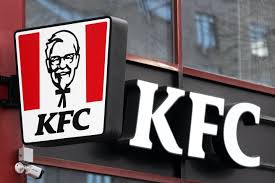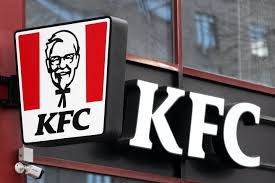
Lettuce is in low supply in Australia. That has forced the fast food giant KFC to use cabbage in its burgers and wraps instead of lettuce.
Following the destruction of lettuce harvests by floods, the company informed clients that it is employing a mixture of lettuce and cabbage. It comes as costs for several fresh fruits and vegetables in Australia have skyrocketed.
Social media users have shared photographs of lettuces that cost more than A$10 ($7.18), which is three times the normal price.
According to KFC Australia's website: "We are currently facing a lettuce shortage as a result of the recent floods in NSW [New South Wales] and QLD [Queensland]. So, until further notice, we're using a lettuce and cabbage combination on all lettuce-containing goods."
"If that's not your bag, simply click 'Customise' on your chosen product and remove Lettuce from the Recipe," it added, signing off with a smiley face emoji.
It is not the first time this year that the company has experienced food shortages. KFC Australia had to change its menu in January due to a shortage of its essential ingredient, chicken.
This was owing to a workforce shortfall at Ingham's, Australia's largest chicken supplier, exacerbated by the "rapid spread of the Omicron variety across eastern Australian states" towards the end of last year.
Meanwhile, the world's largest fast food corporation, McDonald's, experienced a chip shortage in several of its Asian locations, notably those in Japan and Singapore, as a result of the worldwide supply chain issue.
Australia, like many other countries, has been affected by food supply chain concerns induced by the Ukraine conflict and the epidemic.
Extreme weather occurrences, such as massive flooding on Australia's east coast earlier this year, have also had an impact on the country's food output.
This contributed to an increase in the cost of living for Australians, with consumer prices rising by 5.1 per cent in the first three months of 2022. It was the greatest rate of inflation in the country in 20 years, and it was expected to grow even further.
On Tuesday, Australia's central bank boosted borrowing costs by more than expected in an effort to rein in rising inflation.
The Reserve Bank of Australia raised its main interest rate by a half-point to 0.85 per cent.
It stated that it made the decision owing to increased prices driven by a variety of factors, including Covid-related supply chain difficulties, the war in Ukraine, and flooding in Australia.
(Source:www.ndtv.com)
Following the destruction of lettuce harvests by floods, the company informed clients that it is employing a mixture of lettuce and cabbage. It comes as costs for several fresh fruits and vegetables in Australia have skyrocketed.
Social media users have shared photographs of lettuces that cost more than A$10 ($7.18), which is three times the normal price.
According to KFC Australia's website: "We are currently facing a lettuce shortage as a result of the recent floods in NSW [New South Wales] and QLD [Queensland]. So, until further notice, we're using a lettuce and cabbage combination on all lettuce-containing goods."
"If that's not your bag, simply click 'Customise' on your chosen product and remove Lettuce from the Recipe," it added, signing off with a smiley face emoji.
It is not the first time this year that the company has experienced food shortages. KFC Australia had to change its menu in January due to a shortage of its essential ingredient, chicken.
This was owing to a workforce shortfall at Ingham's, Australia's largest chicken supplier, exacerbated by the "rapid spread of the Omicron variety across eastern Australian states" towards the end of last year.
Meanwhile, the world's largest fast food corporation, McDonald's, experienced a chip shortage in several of its Asian locations, notably those in Japan and Singapore, as a result of the worldwide supply chain issue.
Australia, like many other countries, has been affected by food supply chain concerns induced by the Ukraine conflict and the epidemic.
Extreme weather occurrences, such as massive flooding on Australia's east coast earlier this year, have also had an impact on the country's food output.
This contributed to an increase in the cost of living for Australians, with consumer prices rising by 5.1 per cent in the first three months of 2022. It was the greatest rate of inflation in the country in 20 years, and it was expected to grow even further.
On Tuesday, Australia's central bank boosted borrowing costs by more than expected in an effort to rein in rising inflation.
The Reserve Bank of Australia raised its main interest rate by a half-point to 0.85 per cent.
It stated that it made the decision owing to increased prices driven by a variety of factors, including Covid-related supply chain difficulties, the war in Ukraine, and flooding in Australia.
(Source:www.ndtv.com)














